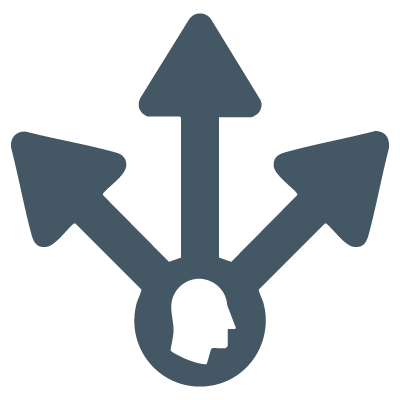We’ve all heard the adage, “You can’t manage what you don’t measure.” Yet many organizations still struggle to measure how leadership development impacts their teams and business performance. While 78% of HR leaders say that behavior change is the most valuable measure of success, many find it challenging to track. That’s a problem because sustained behavior change is what leads to tangible business outcomes. Without a clear plan, even the best learning programs may lack the data needed to prove their impact. Meanwhile, senior leaders across industries are demanding clearer evidence of results.
When leadership development lacks measurable outcomes, it becomes dispensable—often the first budget item cut during tough times. Without proof of impact, executives disengage, ineffective leaders don't improve, and top talent seeks better growth opportunities elsewhere.
The biggest obstacle to measurement is that it’s often an afterthought. Without strategic metrics established from the start, it can be hard to go back and collect the data you need. That’s why it’s critical to think about measurement from the beginning, not as a final step.
Business Impact
How will this leadership program accelerate business performance?
Stakeholder Priorities
What do my stakeholders need and what data is valuable to them?
Long-Term Success
What does success look like one year from now? Three years from now?
Data Collection
How will I collect data?
Accountability
Who is involved and accountable for tracking progress and measuring results?
When you can show proof of real impact, you not only benefit the business but build your own credibility. As a result, leadership development transforms from a "nice to have" into a critical business lever that drives organizational success.
In this blog, we’ll show you several different ways to measure the results of your leadership development program.
How Is Success Measured in Leadership Development?
To shift leadership development from a perk to a critical business lever, L&D must rethink how they measure success. A well-designed program doesn’t only develop leaders. It also drives tangible business outcomes, including:
- Improved business performance.
- Increased leadership engagement.
- Higher HR impact and value.
These are the results that stakeholders are looking for. And if you’re not measuring them, it’s difficult to prove the value of leadership development or secure continued support. HR needs to gather clear data that goes beyond surface-level metrics to show real behavior change and business impact.
Of course, measuring behavior change isn’t easy. It’s far simpler to track participation and completion. But attendance alone doesn’t mean leaders are growing the skills they need to succeed. It’s when L&D takes a strategic approach to measurement that the bottom-line impact of leadership development shines.
One of the most widely used methods for measuring impact is the Kirkpatrick Model. This model evaluates learning across four levels and remains the most common approach for L&D teams. In the next section, we’ll break down how this model can help you measure results effectively.

Level 1 Evaluation: Measure Reaction
How do your leaders respond to your program? In the Kirkpatrick Model, this level is the degree to which participants find the program favorable, engaging, and relevant to them. While many organizations measure Level 1 with “smile sheets,” this model goes beyond participant satisfaction and also includes:
- Engagement: The degree to which participants are actively involved in and contributing to the learning experience.
- Relevance: The degree to which training participants will have the opportunity to use or apply what they learned in training on the job.
Alone, these measures don’t tell you if leaders gained skills. But they can help you predict two key things:
- Personal Motivation: Are leaders invested in the program? When leaders have high personal motivation, they are more likely to apply skills on the job.
- Job Relevance: Did the program provide opportunities to practice new skills before applying them on the job?
From our own research, personal motivation and job relevance are top factors that predict use of skills or behavior change. So while they don’t prove that leaders have changed their behavior, they are positive signs that your program is on the right track.
However, many companies stop here. While this feedback helps you understand how well you’re engaging participants, it doesn’t show whether they change their behavior on the job.

Level 2 Evaluation: Measure Learning
What should your leaders retain from your program? Kirkpatrick defines this level as the degree to which participants acquire the intended knowledge, skills, attitude, confidence, and commitment based on their participation in the program.
You can track learning through post-program checks or by testing before and after the training to measure progress. First, you’ll need to identify specific learning goals for your program. Then you’ll need to test for those outcomes both before and after the training.
For example, DDI’s courses include informal and formal knowledge checks. Assessments that measure practical skill knowledge also provide data for this level.
These checks help ensure that leaders understand the theory behind what to do, but not whether they can demonstrate the skill.

Level 3 Evaluation: Measure Behavior Change
Are your leaders applying what they learned in the program? In the Kirkpatrick Model, this level is the degree to which participants apply what they learned during the program when they are back on the job.
Keep in mind that behavior change takes time. Leaders may need to build their confidence and find the right opportunities to apply their knowledge. You can measure behavior change through surveys or interviews, particularly with managers and direct reports of your program participants. It’s vital that survey participants clearly understand the behaviors or competencies required for leaders to succeed.
At DDI, we measure behavior change by comparing how often leaders use effective leadership behaviors before and after development. For example, DDI’s Impact Evaluation survey of more than 1,300 leaders found that after attending the DDI program, 82% of participants were rated as effective—a 24% increase from before. It’s important that managers, peers, and direct reports provide observations of behavior change. Program participants can also self-report their own change, which helps them to reflect on their own growth.

Level 4 Evaluation: Measure Results
How do better leaders impact the business? According to Kirkpatrick, this level measures the degree to which targeted organizational outcomes occur as a result of the initiative and subsequent support and accountability package. While this is the most comprehensive form of measurement, it’s also where you’re most likely to grab the attention of stakeholders and executives.
Here are some examples of bottom-line results that organizations achieved after a DDI leadership program:
- Reduced Turnover: After launching a training program to build core skills in frontline leaders, Hitachi Energy reduced turnover by 80%. Among the 750 plant supervisors who participated, over two-thirds reported increased engagement for themselves and their teams, and 92% said they were engaged in their jobs.
- Increased Sales: After implementing a leadership program for sales managers, a pharmaceutical company saw a 105% increase in sales volume. Sales productivity increased by an average of 68% per representative whose managers completed the DDI program.
- Safety: To promote a culture that supports employee development, motivation, and retention, nearly 400 employees from a manufacturing company participated in a DDI leadership program. Accidents decreased by 70% and employee turnover also fell by 90%.
Personal motivation and job relevance are top factors that predict application of skills or behavior change.
Examples of Calculating ROI
You can determine your leadership program's Return on Investment (ROI) by calculating its implementation costs and measuring its financial impact on your business. Here are two more examples of organizations that calculated the ROI of their leadership development program:
- $4.4 Million in ROI: An automotive manufacturing company introduced a DDI program into several manufacturing plants with histories of low productivity and performance problems. Similar “control” plants were selected as a comparison group. They tracked quality, on-time delivery of parts, productivity, health and safety, and absenteeism to determine the impact. Compared to the control plants, the experimental site showed a 21% improvement in productivity. And this resulted in an estimated $4.4 million in return.
- $20 Million Saved: Hitachi Energy saved an estimated $20 million through reduced turnover and increased employee engagement in the 18 months after launching its leadership development program. Their Employer of Choice Index score nearly doubled, rising from 45 to 85 (out of 100) and setting the stage for long-term success.
Measuring Implementation Support
The success of your leadership development program also depends on your implementation plan and what support is available to learners. DDI also measures:
- Environmental Support: Do senior managers support the program? Are there opportunities to apply newly learned skills on the job? Are there barriers to leaders participating in more development opportunities? These external factors can slow or speed up the effectiveness of your leadership program.
- Manager Reinforcement: Do managers champion development? Do participants discuss opportunities to apply new skills with their managers? Manager support is one of the top three predictors for behavior change.
Keep Results on Track with Lead Indicators
While your main goal is to drive business results and create behavior change in leaders, watching early lead indicators can help you see if you’re on track.
Lead indicators show how well your current strategy is working and point to future outcomes. They can include:
- Percentage of leaders reached across your organization.
- Participation or attendance rate of learners.
- Manager participation in manager support sessions.
- Content accessed (started or launched) from your LMS, LXP, or online learning platform.
- Completion rate for content.
Create a Measurement Plan
As we mentioned, one of the biggest challenges with measuring the effectiveness of leadership development is that it often happens as an afterthought. If you don’t plan ahead of time, it can be much harder to collect data on program success.
That’s why it’s so important to create a plan to measure results as you design your program. A simple measurement planning grid can help you stay on track. For each success metric you identify, you will need to determine:
- Metric: What are you measuring?
- Data source: Where does the data come from?
- Data collection timeline or due date: Will you measure before, during, or after training? How often will you collect data?
- Data output: What is the format of the measurement or evaluation?
- Accountability: Which department or team will provide the data?
- Any issues or support needed?
Measure Results to Plan Next Steps
Measuring leadership development results isn't optional—it's essential. Without the right data, it’s difficult to prove business value or secure ongoing support from stakeholders. But when done right, measurement does more than justify costs. It positions leadership development as a strategic business driver.
A well-measured program creates a virtuous cycle: better data leads to more effective programs, which develop better leaders, ultimately driving greater business results. With this approach, leadership development isn’t seen as an expense, but as the critical tool it is for growth, innovation, and organizational success.
When leadership programs are properly measured, they transform not only individual careers but also entire company cultures and business outcomes. Better leaders engage teams, improve performance, and create a workplace where both business and people thrive.
DDI partners with organizations to measure what matters. With our Impact Evaluation approach, you can assess leadership programs at every level—from leader reactions and learning to behavior change and business outcomes—making it easier than ever to show impact.
Have a Question?
FAQ
-
How can organizations measure the results of leadership development programs?
At DDI, we recommend measuring leadership development results by evaluating behavior changes, tracking leadership skill growth, and assessing the impact on business outcomes. A combination of assessments, multi-rater feedback tools, and business performance metrics provides a complete picture of leadership growth.
-
What metrics should companies use to evaluate leadership development success?
Companies should focus on metrics such as improved leadership competencies, higher team engagement scores, better retention of top talent, and enhanced business KPIs like productivity and profitability. DDI’s leadership measurement strategies emphasize linking these outcomes to development initiatives.
-
Why is it difficult to measure the ROI of leadership development?
Leadership development impacts are often gradual and influenced by multiple factors, making direct attribution challenging. At DDI, we use a multi-measure approach and longitudinal tracking to help organizations accurately assess the return on their leadership investments.
-
How does DDI help organizations track leadership development impact?
DDI provides leadership assessment tools, progress tracking systems, and business impact analytics that help organizations connect leadership development initiatives to measurable improvements in business results.
Topics covered in this blog

